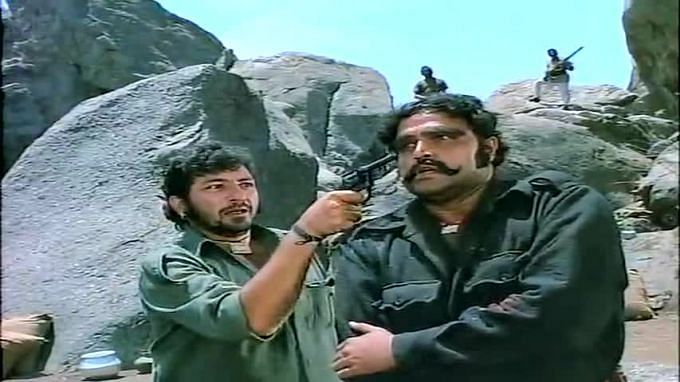Bengaluru: Ramesh Sippy’s iconic Sholay is much more than a film in India. It is an epic whose every dialogue and every frame has been memorised by millions of fans — none more so than Gabbar Singh’s footsteps on a boulder before he utters the dialogue “kitney aadmi they”. It is also no secret that the dacoits’ hideout and the fictional village of Ramgarh were created in Ramanagara, about 50 km from Karnataka’s capital Bengaluru.
But today, a part of the area where the movie was shot has been cut away due to the construction of the six-lane Bengaluru-Mysuru National Highway.
Where the Sholay crew had used dummy dynamites to create the sounds of explosive and gunfire on the rocky terrain of Ramadevarabetta, there are now real explosives. And what’s more, according to environmentalists, these explosives are causing real damage to India’s only vulture sanctuary, where the endangered long-billed vulture nests. Ramanagara is its last remaining habitat, and its numbers have dropped to single digits in recent years.
Shelved plans
Sholay was shot in three-kilometre radius around Ramadevarabetta over a period of two years. It was also called ‘Sippy Nagar’ after producer G.P. Sippy and his son, director Ramesh, as the film generated temporary work for a lot of local residents at a time when they were reeling under a severe drought.
But now, the residents are agitated about the construction work that is blowing away not only the natural rocks, but also their memories associated with them.
The Karnataka government had come up with a proposal for a Sholay-themed park at Ramadevarabetta, but this was opposed by environmentalists, who claimed it would disturb the habitat of the vultures.
In 2012, the area was made an ecologically-sensitive zone and a sanctuary, as the number of film shootings began bringing about an environmental imbalance.
Also read: Human beings are pushing larger animals like rhinos & elephants to extinction faster
Environmentalists’ concerns
The use of explosives to cut through the rocks, just a few kilometres away from the ecologically-sensitive zone, will affect the future activity of the vultures, said Shashi Kumar of the Karnataka Vulture Conservation Trust.
He explained that Ramadevarabetta, spread over 865 acres, includes the vulture sanctuary and the locations where Sholay was shot. The boulders which are now being removed to make way for the road construction are the ones featured in the scene where Veeru (Dharmendra) pretends to be the voice of God speaking to Basanti (Hema Malini).
“Our concern is that that if there is any more blasting activity, it could further affect the vulture nesting. The nesting period is between November to March,” he told ThePrint.
“If you see, in 2017-18, we spotted seven long-billed vultures, five Himalayan griffins and 25 English vultures. In 2018-19, there were five long-billed vultures, four Himalayan griffins and 30 English vultures. But if they (authorities) continue to blast as part of the road expansion, which is just about 300 metres away, it could affect the nesting of these vultures.”
Government response
A.L. Dalesh, the Range Forest Officer, did accept that the Sholay rocks are being cut away for the highway, but allayed the environmentalists’ fears, saying the construction has been chalked outside the sanctuary area, and efforts are being made not to cause any ecological imbalance.
“There is no blasting of rocks; we are only cutting through the boulders. The distance between the sanctuary and the highway project is almost 300-500 metres and we are ensuring that safety of the birds,” Dalesh told ThePrint.
“We have got all the necessary documentation and approval from the eco-sensitive zone monitoring committee,” he said.
Also read: World’s largest eagle ‘rescued’ in Odisha, but experts say ‘doesn’t look like it’






